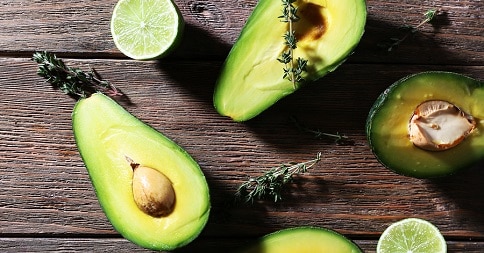Oftentimes, foods that are beneficial to good health may also have calorie counts higher than we might expect. Here are a few surprising examples:
Avocado
Packed with heart-healthy monounsaturated fat, folate and fibre, avocados are a worthy addition to your diet. One avocado, for instance, provides half a day’s worth of folate and 13.5 grams of fibre.
But thanks to its high fat content (84 per cent of it is calories), one avocado also delivers 325 calories and eight teaspoons worth of healthy fat. Treat one-eighth of an avocado as the calorie and fat equivalent of one teaspoon of oil.
Chickpeas
They’re a good source of iron, magnesium, potassium and plant protein. One half-cup of cooked chickpeas supplies seven grams of protein, the amount found in one ounce of meat.
Unlike meat or chicken, however, chickpeas (just like other legumes) also contain carbohydrate, which ups their calorie count: 135 calories per 1/2 cup versus 43 per ounce of chicken. (The slow-burning carbohydrate in chickpeas helps you feel satisfied longer after eating.)
If you’re eating chickpeas instead of meat, Health Canada considers 3/4 cup as one serving of meat and alternatives. If you’re adding chickpeas to a meal with animal protein (in an entrée salad, soup or stew, for example), treat them as the starch component. Limit portion size to 2/3 cup (for women) and one cup (for men).
Granola
Oat-based cereal can deliver a hefty dose of calories thanks to the addition of oil and sugar (including white sugar, cane syrup, honey or brown rice syrup). Ingredients such as nuts, seeds, banana chips and dark chocolate chunks also add extra calories.
Nature’s Path Pure Oats Honey Almond Granola, for example, squeezes 250 calories – and four teaspoons of added sugar – into a half-cup serving. That’s more than double the calories found in one cup of Bran Flakes or Cheerios.
Compare brands of granola to find one that is lower in calories and added sugar. Limit your portion size to one-quarter to one-half cup.
Kale salad
Raw kale offers folate, vitamin C, beta-carotene and lutein (an antioxidant that helps preserve vision), all for only eight calories per cup. Add chopped tomato, mushrooms and a splash of vinaigrette dressing and you’re looking at roughly 60 calories.
That’s a far cry from the 150 calories found in one serving (1 1/4 cups or one-quarter package) of Eat Smart’s Sweet Kale Vegetable Salad Kit. It’s a nutritious (and tasty) blend of kale, Brussels sprouts, broccoli, cabbage and chicory tossed with poppy-seed dressing, pumpkin seeds and dried cranberries.
If you ditch the sugary cranberries and use only half the dressing, you’ll cut your side salad to 90 calories per serving.
Peanuts
They’re loaded with niacin – a B vitamin needed for energy, metabolism and healthy skin, hair and eyes – and they’re a decent source of fibre, magnesium and vitamin E. Plus, peanuts have more protein per serving than walnuts, cashews and even almonds. Like avocados, they’re a good source of monounsaturated fat.
Peanuts are also easy to overeat, and therein lies the problem. At 425 calories per one-half cup, they pack a heavy punch. As a snack, the right-sized serving is one ounce, or about 28 peanuts, which provides 166 calories. Eat them raw or dry roasted and unsalted.
Super seeds
Hemp hearts, chia seeds and ground flax give smoothies, protein shakes, oatmeal and yogurt a nutrient boost by adding omega-3 fatty acids (alpha-linolenic acid), fibre and even a little protein. But at 40 calories (ground flax) to 65 calories (hemp hearts, chia seeds) per tablespoon, you might be getting more calories than you think.
Add only one tablespoon of either seed to your meal or snack, and consider it your added fat.
Make no mistake, we’re not suggesting you avoid these food items. They are each beneficial to good health in their own way. However, because they also boast quite a calorie count, you may want to monitor your intake accordingly.

